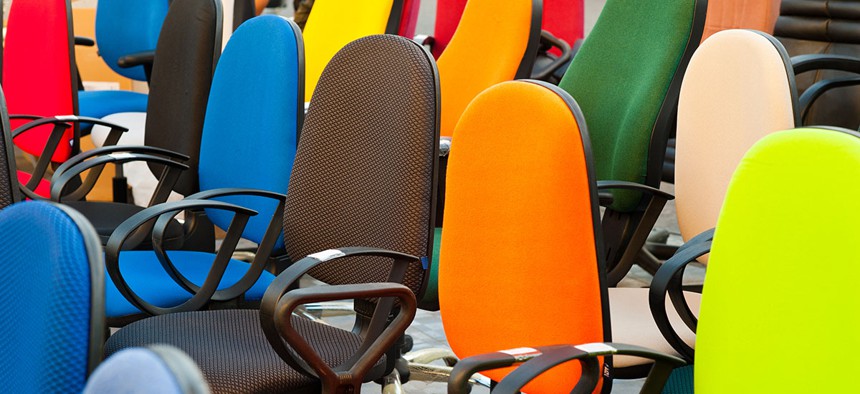Tomorrow’s Office Furniture Will Be Rapidly 3-D-Printed in Pools of Goo

Mikhail Klyoshev/Shutterstock.com
Steelcase, one of the largest office furniture firms in the world, has partnered with MIT to create this new form of 3D printing.
Steelcase, one of the largest office furniture firms in the world, has partnered with MIT to create a new form of 3-D printing that it believes could potentially change the way that furniture is designed and created.
3-D printing has struggled to take off in any meaningful way in the consumer goods industry, after a groundswell of hype. Most traditional 3-D printing methods tend to be very slow even with small objects and use impractical materials, and the finished products often are pretty rough around the edges. While there have been some improvements in speed by companies like Carbon (which is working with Adidas to print soles for its next generation of sneakers), many printers are still limited by the fact that they have to lay down layer after layer of material to build up their items.
MIT believes it has found a better solution—a giant tub of goo and a long tube. MIT’s printer essentially injects material in continuous streams into a tub. “The gel supports the structures as it is printed so that support structures or other materials aren’t needed,” Sklyar Tibbits, the founder of the Self-Assembly Lab at MIT’s International Design Center, told Quartz. “That allows us to print in 3-D space without layers and without the post-process of dissolving or breaking off supports. We can simply remove the part from the gel and wash it with water.”
The end result is sturdy pieces of fantastical-looking designs that can be created out of hard plastics or flexible rubbers. The test designs in the group’s video were produced in minutes, rather than the hours it takes to make something similar on more traditional 3-D printers.
For now, this new methodology is just a proof of concept. The group is researching how to scale the technology, and how to apply it to other materials. “There is breakthrough innovation taking place, but it’s not done,” Steelcase’s Rob Poel told Quartz. “The hope is that the future will see this experience grow as customers will be able to customize and personalize their furniture.”
Washing all that goo off of custom furniture would still beat trying to assemble Ikea furniture.





